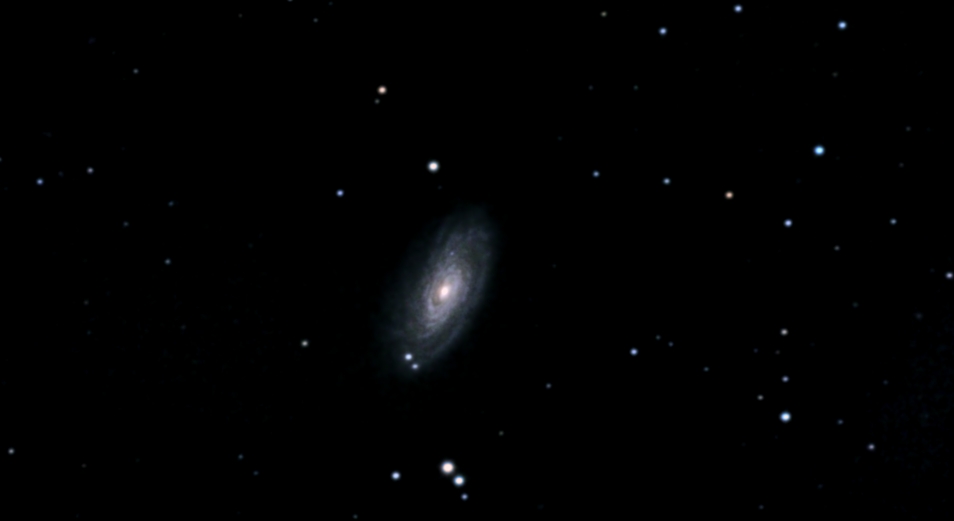
M88 is a 10th magnitude spiral galaxy with multiple arms in Coma Berenices. It was discovered by Charles Messier on March 18, 1781. That was a good day for Messier, because he found eight galaxies and a globular cluster on that same day. It is part of the Virgo-Coma Galaxy Cluster, and is located in a part of the sky filled with relatively bright galaxies, and at the end of a chain of galaxies anchored by M84 and M86. It is considered to be one of the best of the Virgo group of galaxies for an amateur size telescope.
M88 is about 100,000 light-years in diameter. The galaxy is 60 million light-years away. M88 has an unusually high red-shift for its distance, as it is receding from us at about 2000 km/sec. However, a type Ia supernova occurred in M88 in 1999, and calculations based upon the brightness of the observations made of that supernova confirmed its distance from us.
This is a composite LRGB CCD image taken at prime focus on a Takahashi FCT-150 refractor at f7 using an ST-8E CCD carried on an NJP mount. The RGB exposures were binned 2x2. The raw images used to make this composite color image were taken on two successive nights from my backyard.
M88 (NGC 4501)
Constellation: Coma Berenices
RA: 12h 32m 09.7s Dec: +14d 24' 16"
May 28-29, 2003
Image by Sid Leach
Scottsdale, Arizona
Recent Images.
Complete list of images.
Description of equipment used to acquire images.
Home
Feedback and comments should go to Sid